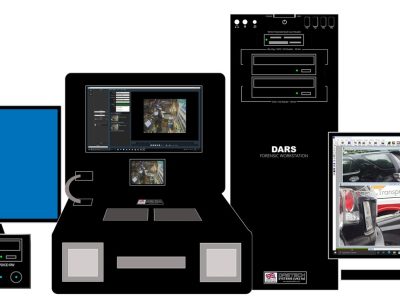Virtual reality has applications in a multitude of fields, including marketing, gaming, entertainment, engineering, education, fashion, art, and training. Despite the fact that the technology’s excitement continues to grow, it’s vital to note that there are a lot of misconceptions regarding virtual reality in the media.
Individuals may look about and interact with their surroundings in virtual reality, which is made up of realistic sounds, sights, and numerous sensations that can replicate a person’s presence in a hypothetical or virtual world.
The following are some of the most frequent virtual reality myths:
- VR is reserved for the most dedicated gamers.
Although there is no doubting that virtual reality technology has helped the video gaming industry and players the most thus far, gaming is far from its only use. To be honest, you can already see the enormous advancements that this technology can bring about. These may be found all over the place.
For example, virtual reality may be used to provide surgical training to surgeons, which has the potential to disrupt the whole medical industry. It may also be utilized to keep students involved by offering vivid or realistic historical lectures, bringing life to dry theory, and providing visually appealing demonstrations of what is being taught in their classrooms. The options are limitless. Another popular misconception concerning virtual reality is:
- Motion Sickness can occur as a result of virtual reality.
Unfortunately, many virtual reality headsets have a negative reputation for causing nausea and vomiting among users. Although that may have been correct a few years ago, technology has advanced and progressed significantly.
The majority of modern VR headsets can now provide both high-resolution screens and excellent head-tracking capabilities. As a result, many people may now completely enjoy a variety of virtual reality activities without fear of negative consequences.
Users of virtual reality equipment may make well-informed selections about which headset to use. Furthermore, most retailers now allow customers to try on their gear before purchasing it; this may assist guarantee that you are purchasing a product that you are comfortable with.
- Virtual reality may be isolating.
Although seeing someone hiding behind some face-gear may appear bizarre or odd at first look, the reality is typically very different. Virtual reality may be used to allow people to communicate and engage with their friends in a more engaging and captivating way than is possible in real life.
Several studies have shown that the technology can aid in the therapy of severe relationship disorders. This immersive technology has recently found its way into the attractions business and has proven to be highly successful. Virtual reality coaster rides are now available at many amusement and theme parks. It’s no wonder that multisensory immersion and virtual reality have become the industry’s most popular trends.
When VR is shared with friends and family, it becomes much more interesting and enjoyable. In a virtual world, the relationships we have with other people tend to reflect better and can add to the overall realism of the experience. As a consequence, calling VR alienating is a gross exaggeration.
- Virtual Reality is a New Discovery
Virtual reality, contrary to common assumptions, is not a brand-new technology. In fact, signs of the technology have been found since the late 1800s. The term “virtual reality” was first used in a book called Le Théâtre et Son, which was published in 1938. Ivan Sutherland invented the first virtual reality headgear, the Sensorama, in 1962. The Sword of Damocles was the name of the gadget. The goal of this gadget was to create a head-mounted display that could play “3D” graphics, as well as blowing air, bespoke scents, and sounds, to simulate virtual reality.
- Virtual reality is just a fad.
If you think this, you are mistaken since the data tell a different picture. Virtual reality, as we know it now, is the culmination of a more than 30-year-old vision. As a result, it’s no surprise that investments in virtual reality are flooding in and expanding at a rapid rate. When millions of dollars are at stake in a business, the notion is less likely to be gimmicky.
However, a large number of clients remain wary, which is natural. A number of early adopters have recently squandered money due to a number of unsatisfactory items in the entertainment business.
Virtual reality, on the other hand, tends to provide a totally different perspective that appeals to the public. People are attracted by the technology since they have never seen anything like it before. In a way, the audience may now be the protagonists of a tale. Virtual reality may be a limited industry right now, but that does not mean it will be a passing craze. Virtual reality is already being used by many of the world’s major brands and corporations in their marketing campaigns, with video games serving as trailblazers. Is it safe to claim that popular misconceptions about virtual reality being a fad have been dispelled? What are your thoughts?
Conclusion
By producing compelling and platform-specific content, the technology has both the appeal and the numbers to impact the mass market.
Among some of these common misconceptions about the incredible VR technology, which one(s) have you heard of? Or which one(s) do you think is true?











Comments